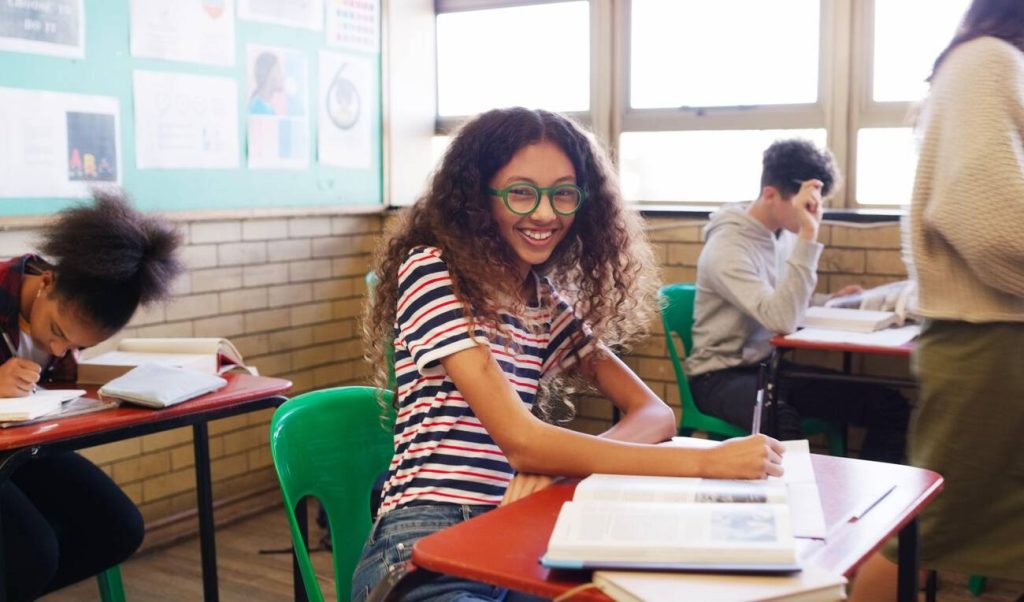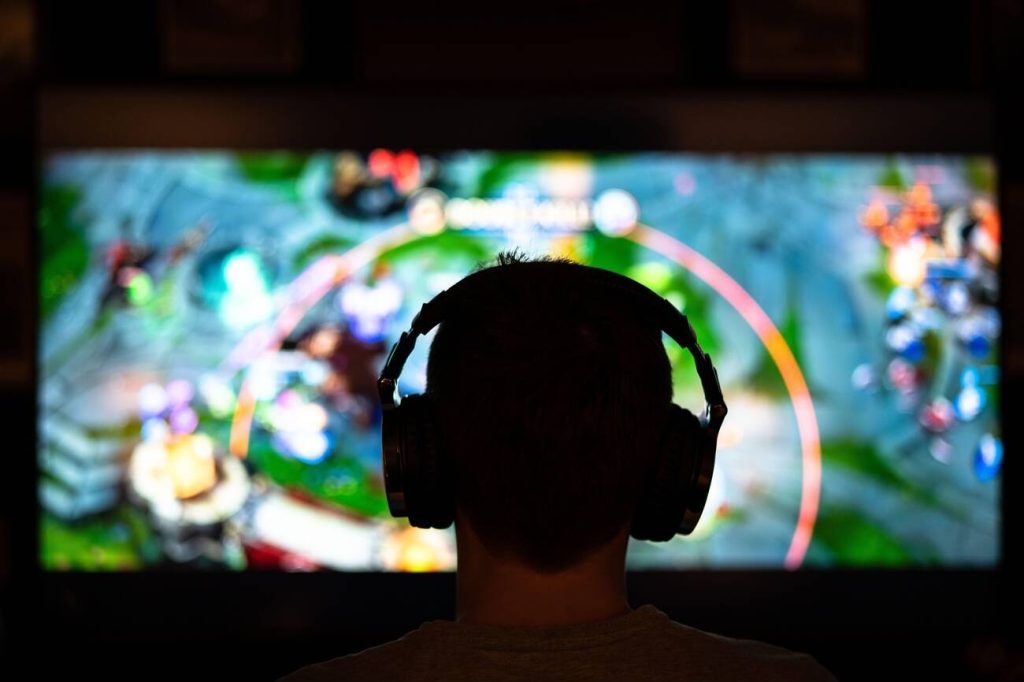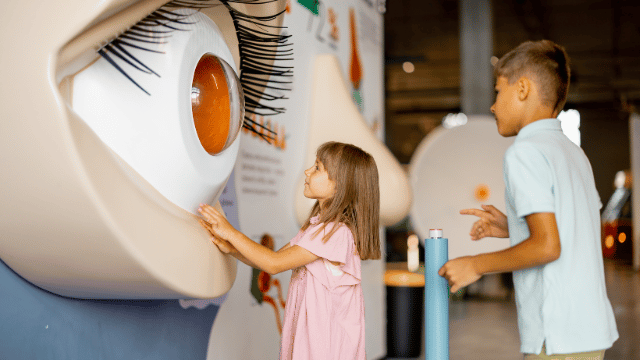Do you ever ponder the role of museums in society? Explore how these institutions preserve history, educate the public, and build community. Museums offer diverse experiences, from art to science, sparking curiosity and inspiring visitors of all ages. Through interactive exhibits and engaging programs, they aim to entertain, enlighten, and shape our understanding of the world. Join us on a journey to uncover the purpose of museums and their impact on preserving heritage and fostering collective knowledge.
Cultural Preservation and Exhibition
Cultural preservation and exhibition in museums aim to safeguard and showcase heritage for future generations. Museums play a crucial role in preserving cultural heritage by employing artifact preservation techniques to ensure the historical significance of items remains intact. Through innovative exhibition techniques, museums bring these artifacts to life, offering visitors a glimpse into the past and educating them on the importance of heritage conservation. By carefully curating exhibits that highlight the diversity and richness of different cultures, museums contribute to a greater understanding of our shared history. Each artifact displayed serves as a window into a specific time and place, allowing us to connect with our roots and appreciate the traditions that have shaped society. Through the preservation and exhibition of cultural heritage, museums not only honor the past but also inspire present and future generations to value and protect our collective history.
Visitor Education and Entertainment
To continue from the previous subtopic, one essential aspect of museums is their role in providing educational experiences and entertainment for visitors. Museums achieve this through interactive exhibits, hands-on activities, virtual tours, educational programs, and engaging workshops. Interactive exhibits allow visitors to actively participate in learning about various subjects, making the experience more immersive and memorable. Hands-on activities provide a tactile way for visitors to explore and understand different concepts, especially beneficial for kinesthetic learners. Virtual tours offer accessibility to those unable to visit physically, widening the reach of educational content. Educational programs and engaging workshops cater to diverse interests and age groups, fostering a lifelong love for learning. By combining education with entertainment, museums create dynamic environments where visitors can engage with history, art, science, and culture in a memorable and enriching way.
Research and Academic Contributions
When exploring the role of museums in providing educational experiences and entertainment for visitors, research and academic contributions play a pivotal role in expanding knowledge and fostering intellectual curiosity. Museums serve as hubs for academic collaboration, facilitating scholarly research, intellectual exchange, educational partnerships, and knowledge dissemination. Academic collaboration within museums often involves partnering with universities, researchers, and experts to conduct in-depth studies and investigations. Scholarly research conducted within museum settings contributes to the advancement of knowledge in various fields, offering valuable insights and perspectives. Intellectual exchange thrives within museums, where ideas are shared, debated, and expanded upon, enriching the academic community. Educational partnerships between museums and academic institutions provide opportunities for students and educators to engage with real-world artifacts and historical contexts, enhancing learning experiences. Lastly, museums play a crucial role in knowledge dissemination by making research findings accessible to the public, contributing to a more informed and intellectually vibrant society.
Community Engagement and Outreach
Engage with your local community through interactive programs and events hosted by museums. Museums play a vital role in fostering community involvement, outreach, and public engagement. By actively participating in volunteer programs and initiatives, you can contribute to the museum’s mission while gaining valuable experiences. Consider the following to enhance your engagement with the museum and its community:
- Volunteer Programs, Initiatives: Get involved in various volunteer programs to support the museum’s operations and events.
- Local Partnerships, Collaborations: Collaborate with local organizations and businesses to create impactful community events and projects.
- Public Engagement, Inclusion: Ensure that museum events are inclusive and accessible to all members of the community.
- Interactive Exhibits, Events: Attend interactive exhibits and events hosted by the museum to immerse yourself in experiential learning opportunities.
Through active participation and collaboration, you can help promote a culture of engagement and inclusivity within your local community.
Historical Identity Preservation
The preservation of historical identity in a museum is crucial for fostering a deeper understanding of cultural heritage. Museums play a vital role in safeguarding historical significance through identity preservation. By showcasing timeless artifacts and conserving memories, museums contribute to the preservation of cultural heritage. Through the display of historical artifacts, museums not only protect the past but also promote a sense of belonging and pride in one’s cultural identity. These institutions serve as guardians of tradition, ensuring that the stories and experiences of previous generations are not lost to time. By maintaining a collection of artifacts that reflect the values and practices of diverse cultures, museums help individuals connect to their roots and understand their place in the world. Through identity preservation, museums contribute to a collective memory that binds communities together and enriches society with a deeper appreciation of its history.
Intellectual Stimulation and Learning
By exploring the exhibits in a museum, you can immerse yourself in a world of intellectual stimulation and learning. Museums offer a range of benefits that contribute to your cognitive development and lifelong education through experiential learning and interactive engagement. Here are some key aspects to consider:
- Cognitive development: Museums provide a rich environment for expanding your knowledge and understanding of various subjects.
- Experiential learning: Engaging with museum exhibits allows you to learn through firsthand experiences, making the information more memorable.
- Interactive engagement: Interactive displays and activities in museums encourage active participation, enhancing your learning process.
- Critical thinking: Museums challenge you to analyze information, make connections, and form educated opinions, fostering critical thinking skills essential for personal and academic growth.
Through these avenues, museums serve as invaluable resources for continuous learning and intellectual growth, guiding you towards a deeper understanding of the world around you.
Educational Role in Society
Frequently, museums actively educate you through engaging exhibits and interactive experiences, fostering a deeper understanding of history and culture. Educational innovation in museums constantly strives to enhance visitor learning by incorporating new technologies and interactive learning methods. Cultural enrichment is a key focus, with museums showcasing diverse perspectives and traditions to broaden your cultural awareness. Historical interpretation at museums helps you contextualize events and artifacts, providing insights into the past. Through experiential engagement, museums offer hands-on activities and immersive displays that make learning enjoyable and memorable. By participating in these educational initiatives, you not only expand your knowledge but also develop a deeper appreciation for the significance of historical and cultural preservation. Embrace the opportunities museums provide for intellectual growth and personal enrichment as you explore the educational role they play in society.
Inspiration and Creativity
Embrace museums’ role in sparking inspiration and fostering creativity through engaging exhibits and interactive experiences, deepening your understanding of history and culture. Museums are not just repositories of artifacts but also catalysts for:
- Creative inspiration: Museums provide a unique setting for igniting your imagination and fueling your creative endeavors.
- Artistic expression: Explore various art forms and styles showcased in museums, inspiring you to express yourself artistically.
- Innovative exhibits: Encounter cutting-edge displays and installations that challenge conventional thinking and push boundaries.
- Imagination exploration: Step into worlds beyond your own through immersive experiences that encourage you to think outside the box.
Moreover, museums offer a platform for cultural enrichment, enriching your perspective and fostering a deeper appreciation for the diversity of human experiences. By engaging with museums, you open yourself up to a world of inspiration and creativity that transcends time and space.
Aesthetics and Grandeur
Explore the captivating beauty and grandeur of museums through their rich displays and intricate designs. The architectural splendor of museums often leaves visitors in awe, with grand facades and ornate interiors that showcase historical opulence. Artistic expression is woven into every corner, from the carefully curated exhibits to the cultural elegance of the artifacts on display. As you wander through the halls, you can’t help but be struck by the aesthetic magnificence that surrounds you.
Museums like the V&A Museum are renowned for their lavish decor and attention to detail, inspiring a deep appreciation for history and art. These institutions serve as beacons of cultural identity, showcasing artifacts from diverse global cultures and promoting pride in local heritage. Places like Colchester Castle evoke a sense of belonging and connection to the past, instilling a profound sense of pride in visitors. Immerse yourself in the beauty and grandeur of museums, where every corner holds a story waiting to be discovered.
Promotion of Cultural Identity
How does the promotion of cultural identity in museums contribute to a deeper sense of connection and pride in one’s heritage? Museums play a vital role in fostering a strong cultural identity and enhancing community ties through various means:
- Preservation of Cultural Heritage: Museums safeguard and display artifacts that represent the essence of a community’s history and traditions.
- Identity Formation: By showcasing historical objects and stories, museums help individuals understand and connect with their roots, shaping their sense of self.
- Promotion of Pride: Museums celebrate the achievements and uniqueness of different cultures, instilling a sense of pride in one’s heritage.
- Community Connection: Museums serve as gathering places where people can come together to appreciate their shared history and values, strengthening community bonds.
Through these efforts, museums not only promote local culture but also contribute to a more inclusive global representation of diverse heritages.
Heritage Understanding and Appreciation
To understand and appreciate heritage, museums provide a platform for immersive and enlightening experiences. By showcasing historical artifacts, promoting cultural heritage, and facilitating historical appreciation, museums play a vital role in heritage preservation and identity preservation. Through their exhibits and programs, museums offer insights into diverse global cultures, fostering connections between people worldwide.
| Heritage Preservation | Cultural Heritage | Identity Preservation |
|---|---|---|
| Safeguarding historical items for future generations | Showcasing traditions and customs of various cultures | Instilling a sense of pride and belonging |
| Preserving historical sites and buildings | Celebrating the richness of different heritages | Connecting individuals to their roots |
| Ensuring the continuity of valuable historical knowledge | Promoting respect for diverse cultural practices | Preserving the uniqueness of identities |
Local Pride and Belonging
Local communities find a sense of pride and belonging through their engagement with museums. Museums play a crucial role in fostering a connection to local pride, community heritage, and cultural identity promotion. By showcasing historical significance, museums help individuals feel a deep-rooted bond to their communities. Here’s why museums contribute to local pride and belonging:
- Community Heritage: Museums preserve and display artifacts that hold significance to the local community, creating a sense of shared history and belonging.
- Cultural Connection: Through exhibitions and educational programs, museums facilitate a connection to the cultural roots of a community, strengthening pride in cultural heritage.
- Identity Promotion: Museums showcase elements that define a community’s identity, promoting a sense of pride and ownership among residents.
- Historical Significance: By highlighting the historical significance of local events and figures, museums contribute to shaping a community’s narrative and fostering a sense of pride in its past.
Connection to Global Cultures
One significant way museums fulfill their purpose is by connecting you to diverse global cultures through their exhibits and programs. Museums serve as platforms for global connections, facilitating cultural exchange and showcasing international influences. By curating artifacts and artworks from around the world, museums provide a window into different societies, traditions, and histories, promoting cross-cultural dialogue. Through interactive displays and educational programs, museums create opportunities for visitors to explore the richness and diversity of human heritage. These institutions not only preserve the past but also actively engage with the present, fostering a deeper understanding and appreciation of global interconnectedness. By highlighting the similarities and differences among various cultures, museums contribute to a more inclusive and tolerant society. Visiting museums that feature diverse global collections can broaden your perspective, inspire curiosity about other cultures, and encourage a sense of unity amidst the world’s rich tapestry of traditions.
Historical Artifact Display
Explore how museums showcase historical artifacts from various cultures, providing insights into the past and fostering a deeper appreciation for global heritage.
- Historical Significance: Museums preserve items of historical significance, offering tangible connections to bygone eras.
- Artifact Interpretation: Curators analyze and present artifacts, unraveling stories and meanings behind them for visitors to understand.
- Cultural Context: Exhibits within museums place artifacts within their cultural contexts, illustrating societal practices and beliefs.
- Timeless Treasures: Museums safeguard timeless treasures, ensuring their preservation for future generations to admire.
When you visit a museum and engage with historical artifacts, you witness the symbolic representation of diverse cultures and eras. Each item on display holds historical significance, inviting you to delve into its interpretation within its cultural context. These timeless treasures not only offer a glimpse into the past but also serve as symbolic representations of human creativity, resilience, and evolution over time.
Tourism Industry Support
Supporting the tourism industry, museums attract visitors from around the world, enriching cultural experiences and contributing to economic growth. Museums play a vital role in promoting cultural exchange and fostering international relations through their diverse collections and educational programs. By implementing sustainability practices, museums mitigate their environmental impact, contributing to community development and preserving natural resources for future generations. Embracing technological innovation, museums offer interactive experiences that engage visitors and enhance their understanding of history and art. Through local partnerships, museums collaborate with businesses and tourism agencies to promote the local area as a tourist destination, boosting economic growth and creating opportunities for the community.
| Keywords | Description |
|---|---|
| Economic Growth | Museums contribute to the economic growth of regions through tourism and local partnerships. |
| Community Development | Museums play a role in community development by promoting cultural exchange and engaging with local businesses. |
| Cultural Exchange | Museums facilitate cultural exchange and international relations through their diverse collections and educational programs. |
| Technological Innovation | Museums embrace technological innovation to offer interactive experiences that enhance visitor engagement and learning. |
Economic Contribution
To understand the economic contribution of museums, you must consider their impact on local businesses and tourism. Museums play a vital role in boosting the economy through various means:
- Economic Impact: Museums generate revenue for the local economy through ticket sales, gift shop purchases, and event rentals.
- Financial Benefits: Museums create job opportunities and support local businesses such as restaurants, hotels, and transportation services.
- Local Development: Museums attract investments in infrastructure and urban development, revitalizing neighborhoods.
- Tourism Boost: Museums draw in tourists, increasing foot traffic to the area and stimulating the hospitality sector.
Research Facilitation
In museums, research facilitation plays a crucial role in expanding knowledge and understanding of historical artifacts and cultural significance. Facilitating research involves providing access to resources, artifacts, and experts that can support academic collaboration and scholarly exploration. Museums serve as hubs for knowledge dissemination, offering a platform for historical inquiry and in-depth analysis of cultural materials. Through academic collaboration, researchers can delve into the depths of history, uncovering hidden stories and unraveling the complexities of the past. Scholars benefit from the wealth of information housed within museums, enabling them to conduct thorough investigations and contribute to the collective understanding of our heritage. By fostering an environment conducive to research and exploration, museums play a pivotal role in advancing academic pursuits and preserving the richness of our cultural history.
Preservation of Traditions
You frequently encounter the preservation of traditions in museums, where historical practices and customs are safeguarded for future generations. Embracing the richness of cultural heritage, museums play a vital role in perpetuating ancestral customs and maintaining a link to our historical legacy. Here are some key aspects related to the preservation of traditions:
- Traditional practices
- Cultural heritage
- Folk art preservation
- Ancestral customs
Through curated exhibits and interactive displays, museums offer a glimpse into the past, celebrating the diverse tapestry of human traditions. By showcasing folk art, artifacts, and rituals, these institutions contribute to the appreciation and understanding of various cultural practices. Preserving these traditions not only honors our ancestors but also fosters a deep sense of connection to our roots, ensuring that the essence of our heritage endures for generations to come.
Philosophical Reflection
Museums’ role in encouraging philosophical reflection is crucial for fostering deeper understanding and introspection. When you visit a museum, you are prompted to engage in existential contemplation as you ponder the historical significance of artifacts on display. The ethical dilemmas presented in exhibitions prompt you to consider their societal relevance and the implications they have on contemporary issues. Through personal reflection, museums offer a platform for cultural interpretation, allowing you to delve into the moral implications of past events and engage in philosophical inquiry.
Moreover, museums facilitate identity exploration by showcasing diverse perspectives and histories, encouraging you to reflect on your own place in society. By examining exhibits that touch on various aspects of human experience, you are given the opportunity to contemplate the societal impact of different narratives and historical contexts. Ultimately, museums serve as catalysts for deep introspection and critical thinking, enriching your understanding of the world around you.
Societal Impact and Relevance
Exploring the societal impact and relevance of museums delves into their profound influence on communities and cultural understanding. Museums play a crucial role in society by shaping perspectives, fostering connections, and preserving heritage.
- Societal Influence: Museums influence societal norms, values, and perceptions through their exhibits and programs.
- Relevance Today: Museums remain relevant by adapting to modern trends, technology, and audience preferences.
- Public Engagement: Museums engage the public through interactive exhibits, educational initiatives, and community events.
- Cultural Significance: Museums hold significant cultural artifacts, artworks, and historical objects that contribute to the preservation of cultural heritage.
In today’s fast-paced world, museums continue to have a contemporary impact by serving as hubs of knowledge, creativity, and inspiration for individuals of all ages and backgrounds. Embracing their role as dynamic institutions, museums contribute to the enrichment of society and the promotion of cultural diversity.
Sentimental Value of Artifacts
One key aspect of artifacts within museums lies in their ability to evoke sentimental connections and personal memories. Emotional attachment to these objects often stems from their historical significance, serving as tangible links to the past. Visitors often find themselves reminiscing about personal memories triggered by these artifacts, creating a deep sense of connection to their own pasts. Moreover, these objects play a crucial role in preserving cultural heritage, acting as symbolic representations of traditions and practices that have shaped societies over time.
When individuals encounter artifacts that hold personal significance, whether through familial ties or shared cultural experiences, they are reminded of the stories and values that have been passed down through generations. This emotional resonance not only enriches the museum experience but also reinforces a sense of identity and belonging. By showcasing these objects, museums provide a platform for visitors to engage with their heritage, fostering a greater appreciation for the diverse narratives that contribute to our collective history.
Visual Representation of History
When you encounter artifacts in museums, they serve as powerful visual representations of history, connecting you to the past through tangible objects. Here’s why visual representation in museums is crucial:
- Historical narratives: Artifacts in museums help weave together historical narratives, offering a tangible link to the past.
- Interactive exhibits: Museums often feature interactive exhibits that engage visitors and provide a hands-on learning experience.
- Visual storytelling: Through curated displays and exhibits, museums engage in visual storytelling, bringing history to life in a compelling manner.
- Digital experiences: Some museums incorporate digital experiences like augmented reality to enhance visitors’ understanding of historical events.
Promoting Social Cohesion
By showcasing diverse historical narratives, museums promote social cohesion by fostering a shared sense of cultural identity and understanding among visitors. Museums play a crucial role in promoting social integration, unity, and cultural cohesion, fostering harmony and togetherness within communities. Through inclusive exhibits that celebrate diversity, museums encourage community bonding and solidarity, creating spaces where individuals from all backgrounds can come together to appreciate shared heritage and values. By highlighting the interconnectedness of different cultures and histories, museums contribute to a sense of inclusivity and mutual respect among visitors. This emphasis on harmony and togetherness helps strengthen the fabric of society, promoting a unified and cohesive community.
| Social Integration | Cultural Cohesion | Community Bonding |
|---|---|---|
| Unity | Harmony | Solidarity |
| Inclusivity | Diversity | Togetherness |
Collective Memory Preservation
To continue the discussion on the preservation of collective memory from the previous subtopic, museums play a pivotal role in fostering a shared sense of cultural identity and understanding among visitors. When it comes to memory preservation, museums are essential for safeguarding historical significance, promoting cultural heritage, strengthening community connections, and preserving identity.
- Memory Preservation: Museums serve as guardians of the past, ensuring that valuable artifacts and stories are protected for future generations.
- Historical Significance: By showcasing historical objects and narratives, museums highlight the importance of events and figures that have shaped society.
- Cultural Heritage: Museums play a crucial role in preserving and celebrating diverse cultural traditions, customs, and art forms.
- Community Connection: Museums provide spaces where communities can come together to learn, share experiences, and form bonds through a shared appreciation of history and culture.
Well-being and Cultural Diversity
Museums promote cultural well-being and diversity through their exhibits and programs. Cultural wellness is fostered by museums through the preservation and celebration of diverse heritages, promoting an understanding and appreciation of different cultures. Diversity appreciation is encouraged as museums showcase a wide array of artifacts and stories, highlighting the richness of global cultures. This emphasis on diversity leads to social harmony by fostering inclusivity and understanding among communities. Visitors often experience well-being benefits from the sense of connection and enrichment gained through exploring varied cultural perspectives. Additionally, museums play a vital role in creating global connections by bridging geographical and cultural gaps, facilitating dialogue and understanding on an international scale.
| Cultural Wellness | Diversity Appreciation | Social Harmony |
|---|---|---|
| Preservation of diverse heritages | Showcasing a variety of artifacts and stories | Fostering inclusivity and understanding |










